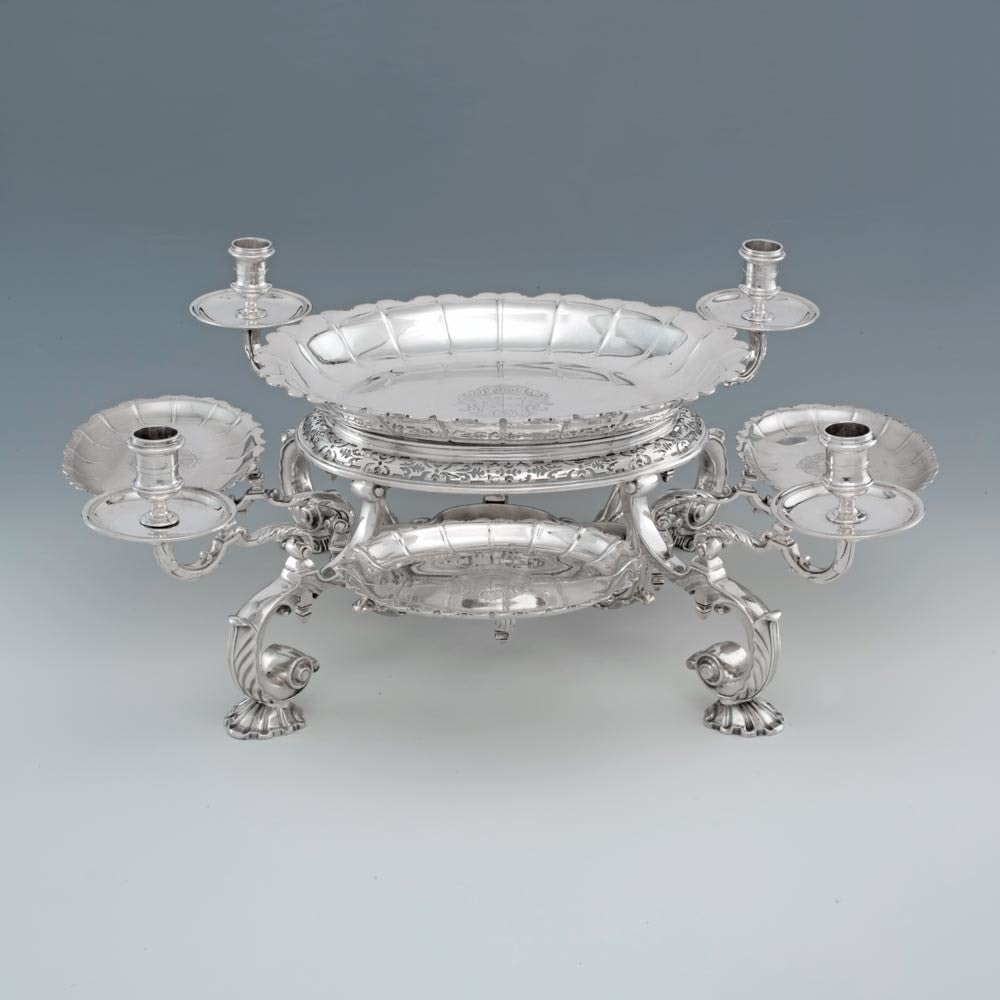


John Edwards
A George II Antique English Silver Epergne, 1736
Length: 19"
Width: 17"
Weight: 129 oz. 4 dwt.
Width: 17"
Weight: 129 oz. 4 dwt.
London
H0789
$ 85,000.00
Further images
The arms are those of Ilbert impaling Courtenay for William Ilbert (1700-1751), of Bowringsleigh, co. Devon and his wife Bridget (1712-1790), daughter of Sir William Courtenay 2nd Bt. (1675-1735), of...
The arms are those of Ilbert impaling Courtenay for William Ilbert (1700-1751), of Bowringsleigh, co. Devon and his wife Bridget (1712-1790), daughter of Sir William Courtenay 2nd Bt. (1675-1735), of Powderham Castle, co. Devon, whom he married in 1734.
The newly married William Ilbert acquired both silver and furniture for his family seat, Bowringsleigh, near Kingsbridge, Devon. The house dates from the 14th century, however, in William Ilbert's time much of the 15th century and 17th century work would have been in evidence, rooms which survived the later bold remodelling in the late 1860s and early 1870s by the architect Richard Coad. The epergne, from the French 'pargner', to save, came into use in England at the beginning of the 18th century and was made in many forms to be used as a centrepiece on the table. The baskets and bowls would have held various fruit, sweetmeats and condiments for the dessert.
Provenance:
William Ilbert (1700-1751), of Bowringsleigh, co. Devon.
A Gentleman [Cooling Galleries Ltd., 92 New Bond St.]; Christie's, London, 19 February 1936, lot 73 (£195 to Courtenay Ilbert).
Courtenay Ilbert (1888-1956), then by descent to,
Michael Inchbald (1920-2013), architect and interior designer, then by descent.
The newly married William Ilbert acquired both silver and furniture for his family seat, Bowringsleigh, near Kingsbridge, Devon. The house dates from the 14th century, however, in William Ilbert's time much of the 15th century and 17th century work would have been in evidence, rooms which survived the later bold remodelling in the late 1860s and early 1870s by the architect Richard Coad. The epergne, from the French 'pargner', to save, came into use in England at the beginning of the 18th century and was made in many forms to be used as a centrepiece on the table. The baskets and bowls would have held various fruit, sweetmeats and condiments for the dessert.
Provenance:
William Ilbert (1700-1751), of Bowringsleigh, co. Devon.
A Gentleman [Cooling Galleries Ltd., 92 New Bond St.]; Christie's, London, 19 February 1936, lot 73 (£195 to Courtenay Ilbert).
Courtenay Ilbert (1888-1956), then by descent to,
Michael Inchbald (1920-2013), architect and interior designer, then by descent.


